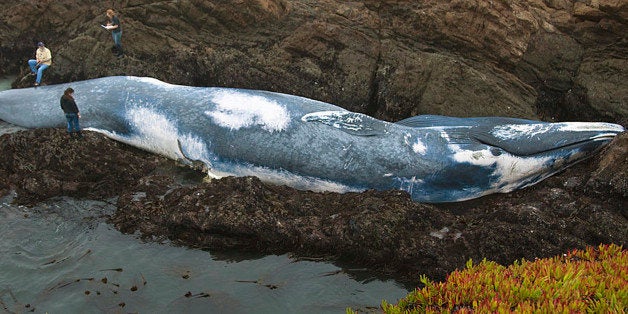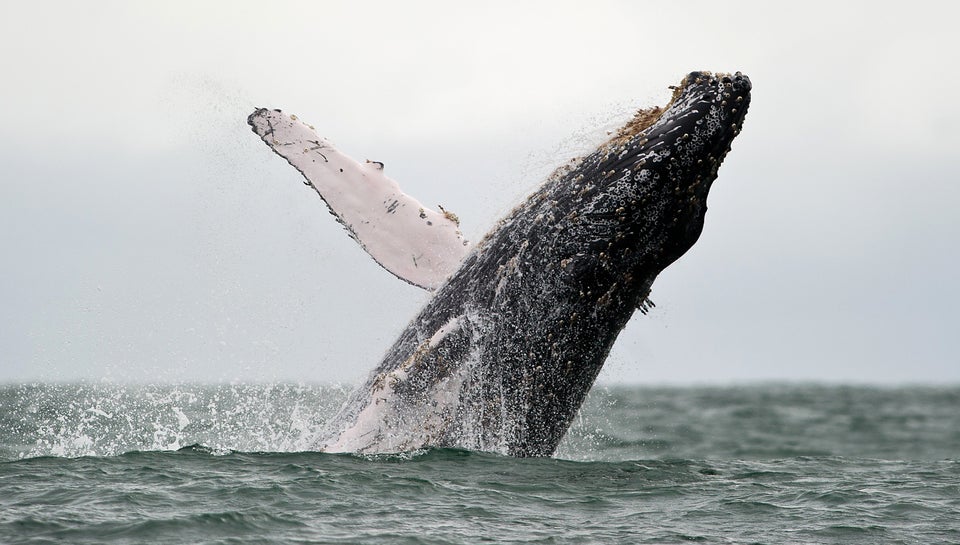
Blue whales and cargo ships don't mix. In fact, scientists say frequent collisions between the whales and giant ocean-going vessels may help explain why blue whale populations remain low despite efforts to protect the endangered species.
Now a new study reveals why ocean-going ships pose such a big threat to the whales: the gentle giants simply don't know how to get out of the way.
Smart but vulnerable. Like all whales, blues are smart. But since they're the largest animal on Earth, they've never had to defend themselves against "predators."
"It's not part of their evolutionary history to have cargo ships killing them, so they haven't developed behavioral responses to this threat," Dr. Jeremy Goldbogen, assistant professor of biology at Stanford University and a co-author of the study, said in a written statement. "They simply have no compelling response to avoiding these dangerous ships."
How do blue whales respond to oncoming ships? For the study, the researchers used suction cups to attach GPS (global positioning system) devices and dive-logging units to blue whales off Long Beach, Calif., one of the world's busiest ports.
The researchers observed 20 ships passing by nine whales, at distances ranging from 60 meters to more than 3 kilometers, and analyzed how the whales responded. It turned out that the whales tended not to swim to the side to avoid a ship -- but to make a slow dive.
"We also observed the slow-dive response, or the sinking behavior, during tagging," Dr. Megan McKenna, a research biologist at the National Park Service and the study's senior author, told The Huffington Post in a phone interview. "In some cases, after we placed the suction cup tags on the animal, the animal would sort of sink out of our vision, possibly to get out of the way... So, it could be evidence for a 'startle response' to a disturbance at the surface."
(Story continues below.)
GPS data from a blue whale show the animal (blue dots) rising to the surface and then slowly dipping and narrowly missing a cargo ship (red dots) before diving deep once again. Credit: Stanford University, Goldbogen et. al.
Not fast enough. A whale must dive about 30 meters below the surface to escape a moving ship. The whales observed in the study sank only about a half-meter per second -- barely fast enough to move out of a ship's path.
The researchers concluded that the slow-dive response is likely a factor in making not only blue whales but also possibly other big whales more vulnerable to ship strikes than other marine creatures.
"The limited avoidance of ships by blue whales was somewhat surprising in that we sometimes expect an intelligent species like blue whales might be expected to better understand this threat and how to avoid it," study co-author John Calambokidis, a research biologist and one of the founders of the Olympia, Wash.-based Cascadia Research organization, told The Huffington Post in an email. "These are animals supremely adapted to surviving in a challenging marine environment and fast, large ships is something they have not had to deal with or are evolved to deal with."
Solving the problem. The researchers plan to keep tracking the whales for several weeks. In addition, they plan to extend their research to include humpback whales. The hope is that the data they collect will help the shipping industry figure out ways to minimize the risk of collisions by either rerouting ships or lowering their speeds through waters where whales roam.
"We know now, at least in the case of blue whales, that they're not reacting in the way to allow them to avoid collision," McKenna said. "So now the conversation should be to come up with solutions to minimize that encounter."
The study was published online in the journal Endangered Species Research on April 29, 2015.

